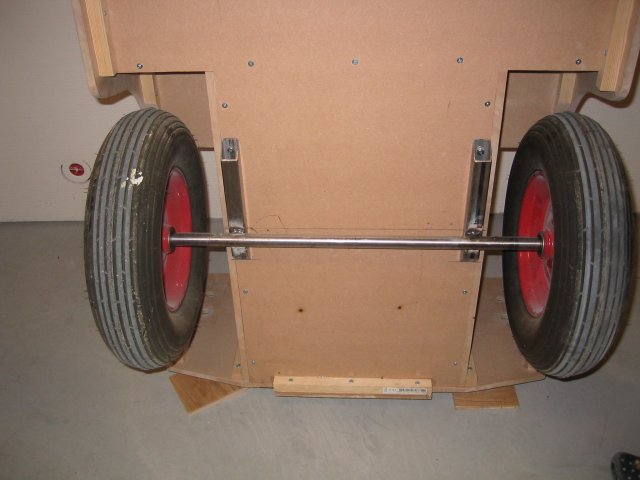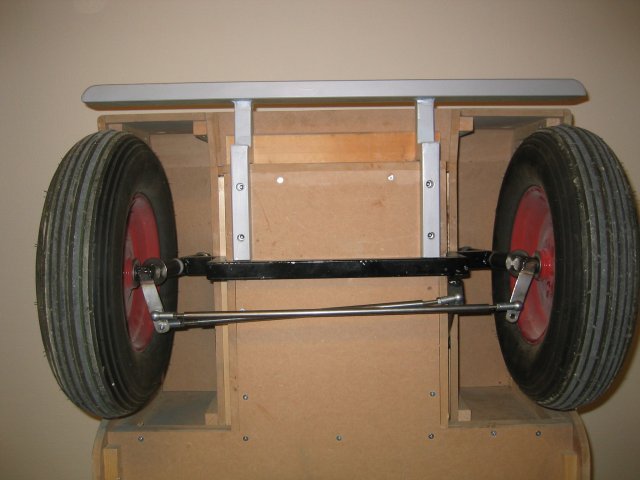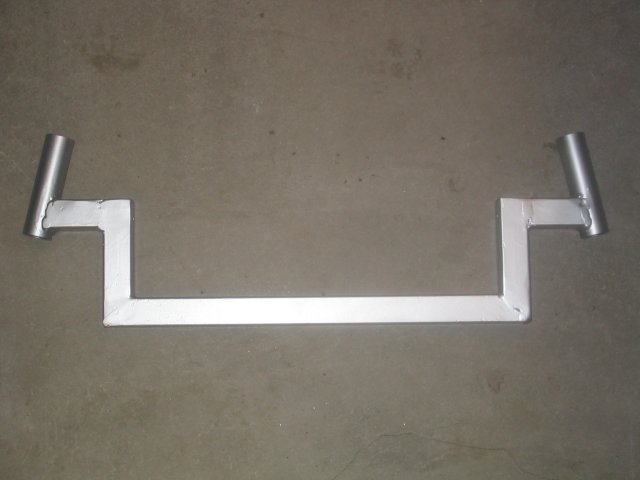The build manual has plans for the axles and suspension. These are easy to build - rigid rear axle and a front axle like the ones found on trolleys. It also has a suggestion and sketches for a front axle with suspension.
A long time ago, I used to have a genuine interrest in cars and motors. To be honest, I found the setup to be just too simple. I had to improvise. The wheels I had got had bearings for 18mm axles. Instead of using 25mm pipes for axles, I used an 20mm stainless steel axle which I cut down to 18mm for the bearings. At the ends, I made M16 threads. Center nuts are how wheels are secured in Formula 1 - the Toylander can have no less.
At the rear, I increased the track by 50mm and lowered the suspension by 25mm compared to the instructions. A Land Rover has a lot of ground clearance and a narrow track. This is favourable for driving along English sheep trails, but the Toylander is not intended for offroad use. At least not intentionally. My priority is on handling and stability on road.
At the front, a lot more improvements could be done. The front suspension described in the plans is intended to be rugged and easy to build. And it is. My wish was to build a front suspension giving better road handling, beeing just as strong and still reasonably easy to build. I used suggested sketches for "suspension steering" as a start.
The first adjustment I made to the design, was to incline the sliding pillars to achieve a positive King Pin Inclination. This makes the front wheels turn about a point in the center of the tyre. Additionally, the steering will be self-centering. That's a good thing.
Next thing I changed was the angle of the steering arms. When these are in parallell, both front wheels will turn the same angle when you turn the steering wheel. However, when a car is driving around in a circle, the distance from the center of the circle to each front wheel is different. Thus, the angle each wheel is turned relative to the car, should be different. This is described by the Ackermann's principle.
The front track is increased by 2" and the car lowered 1" like at the back.
Today, the steering is similar to the ones found in gocarts. There is an arm attached directly to the steering column. This means there is half a turn on the steering wheel from full left to full right. That is OK for a gocart, but it is not particularly Land Rover-ish. I'd like it to take at least two full turns of the steering wheel from full left to full right. This is not a priority, though. It'll have to wait until a suitable steering rack shows up.





